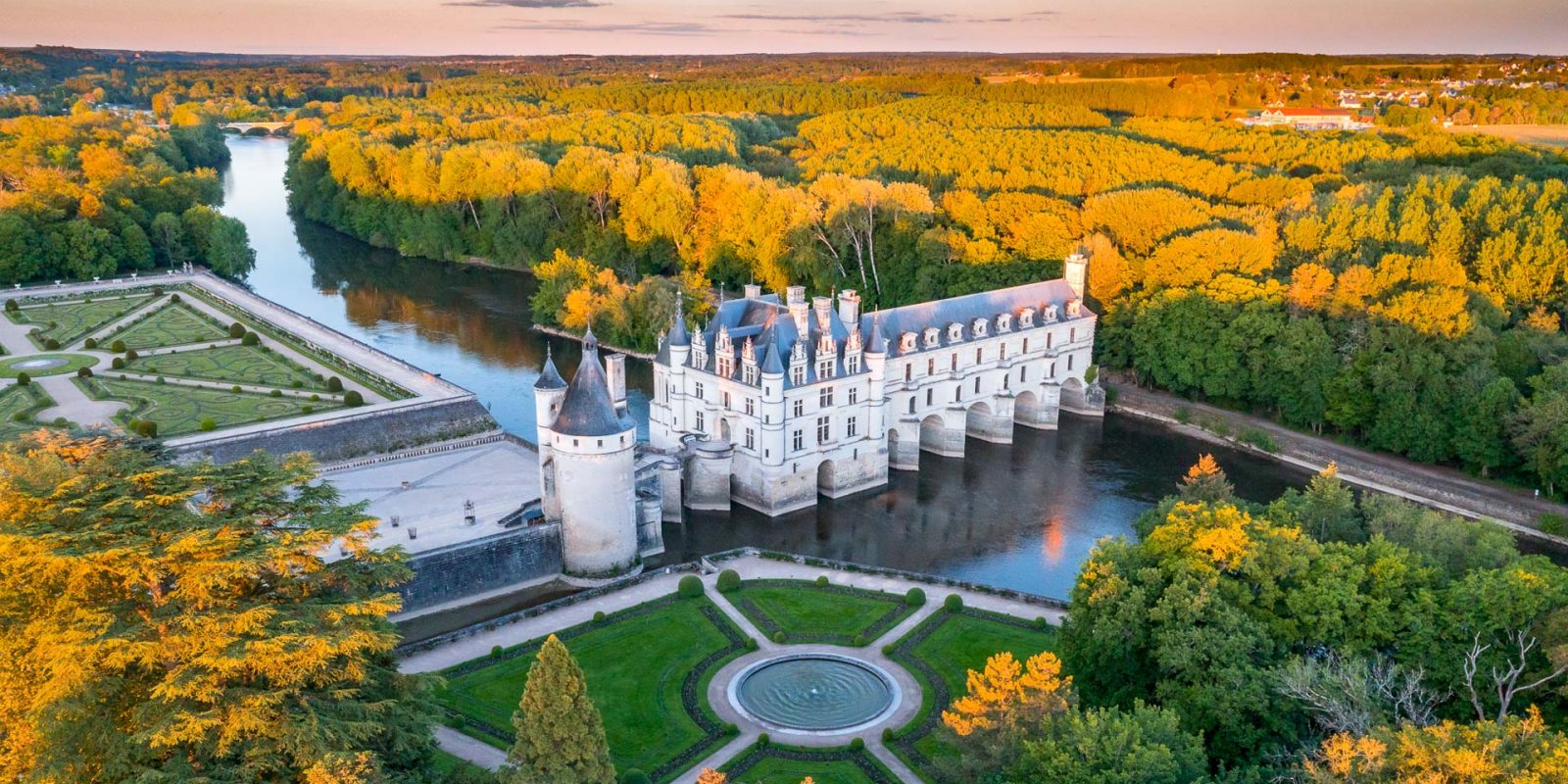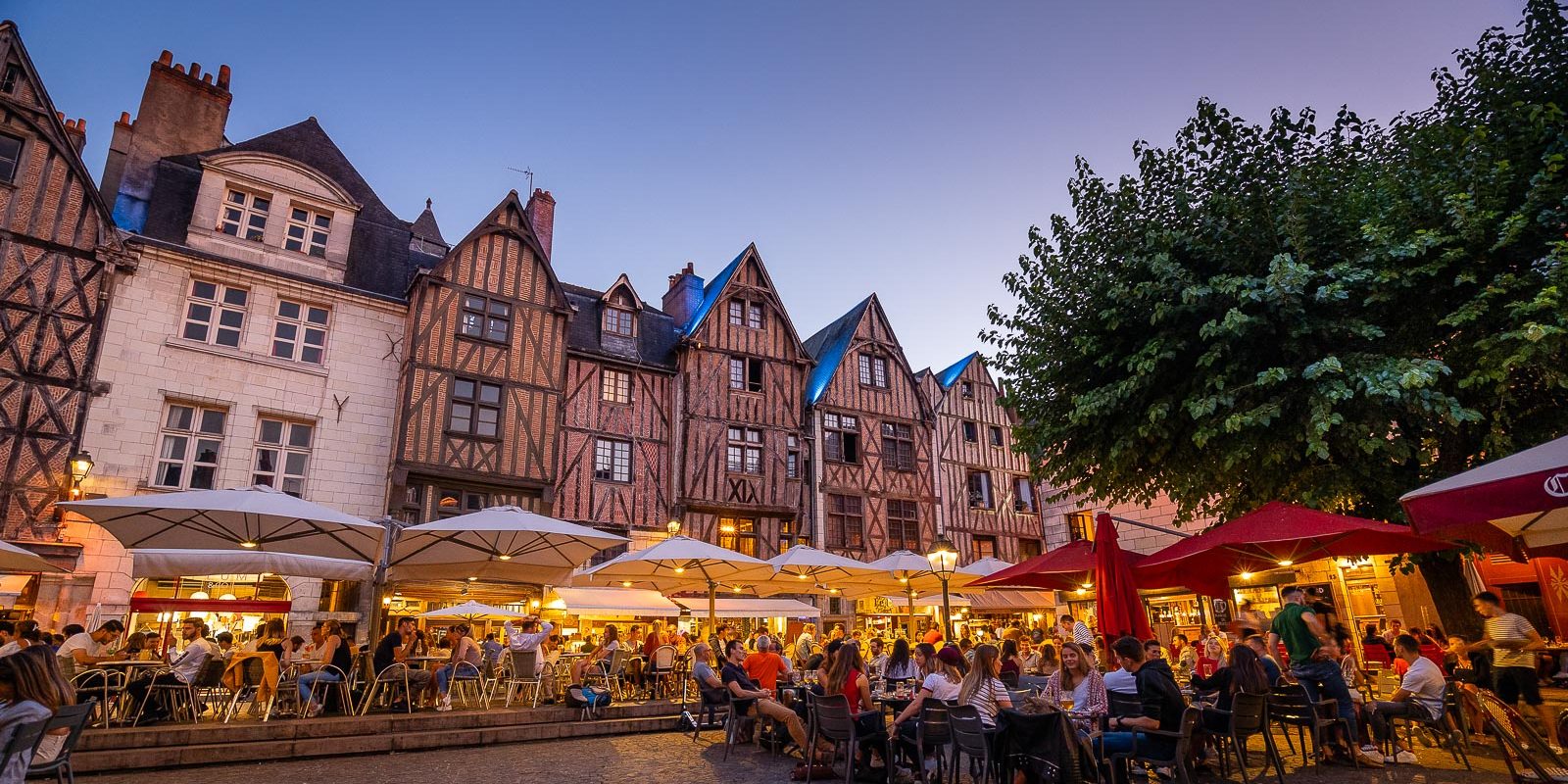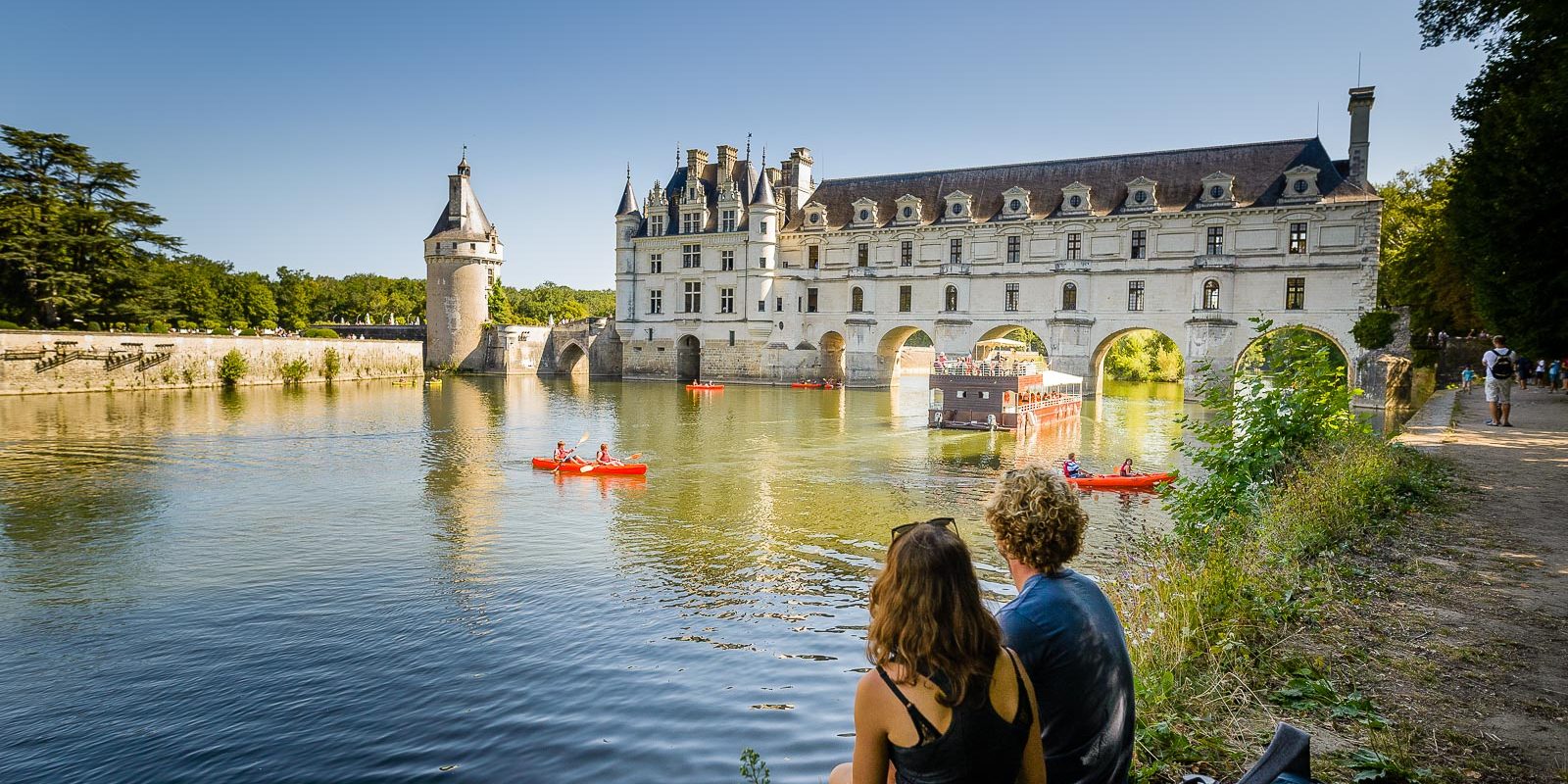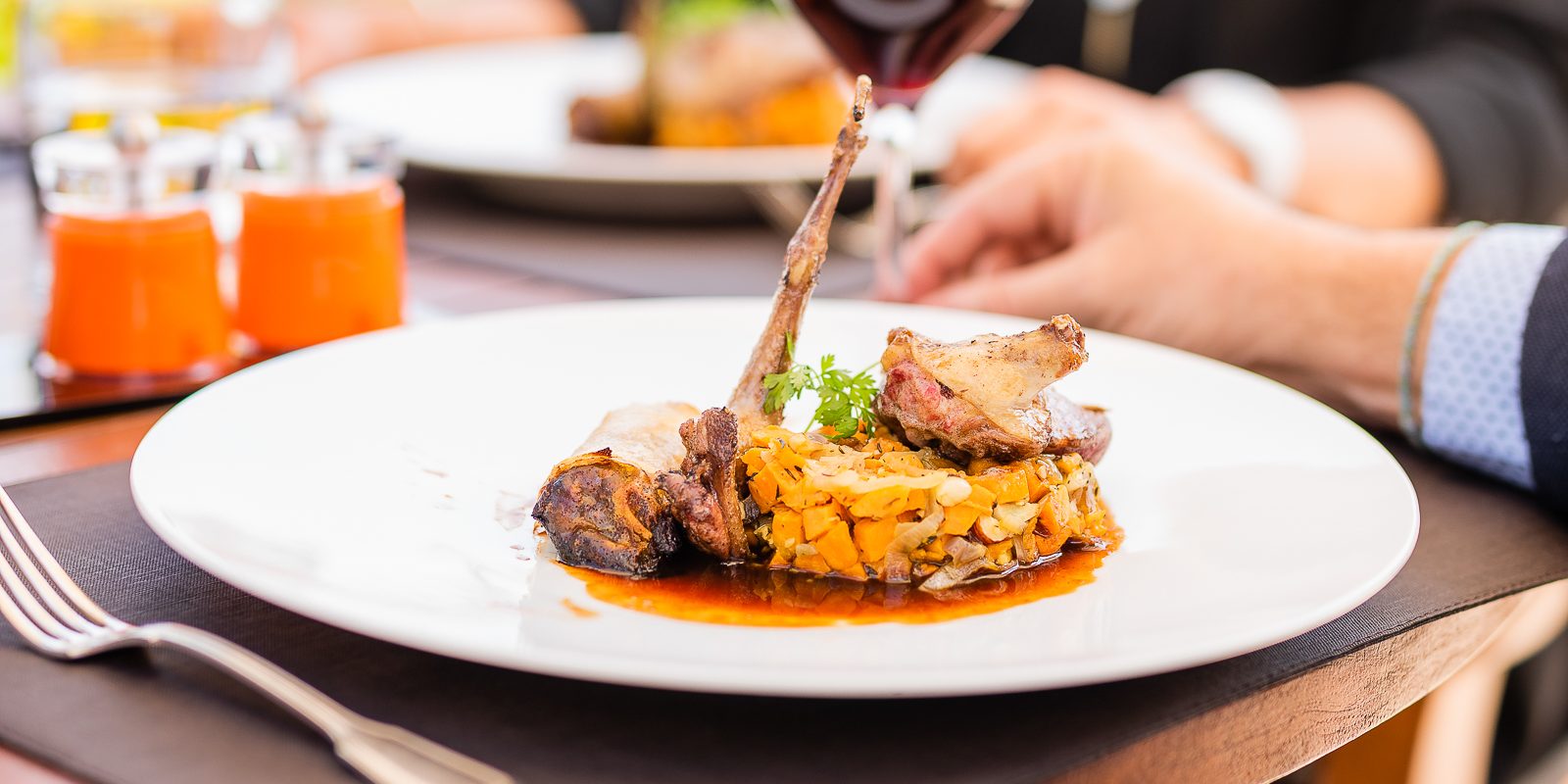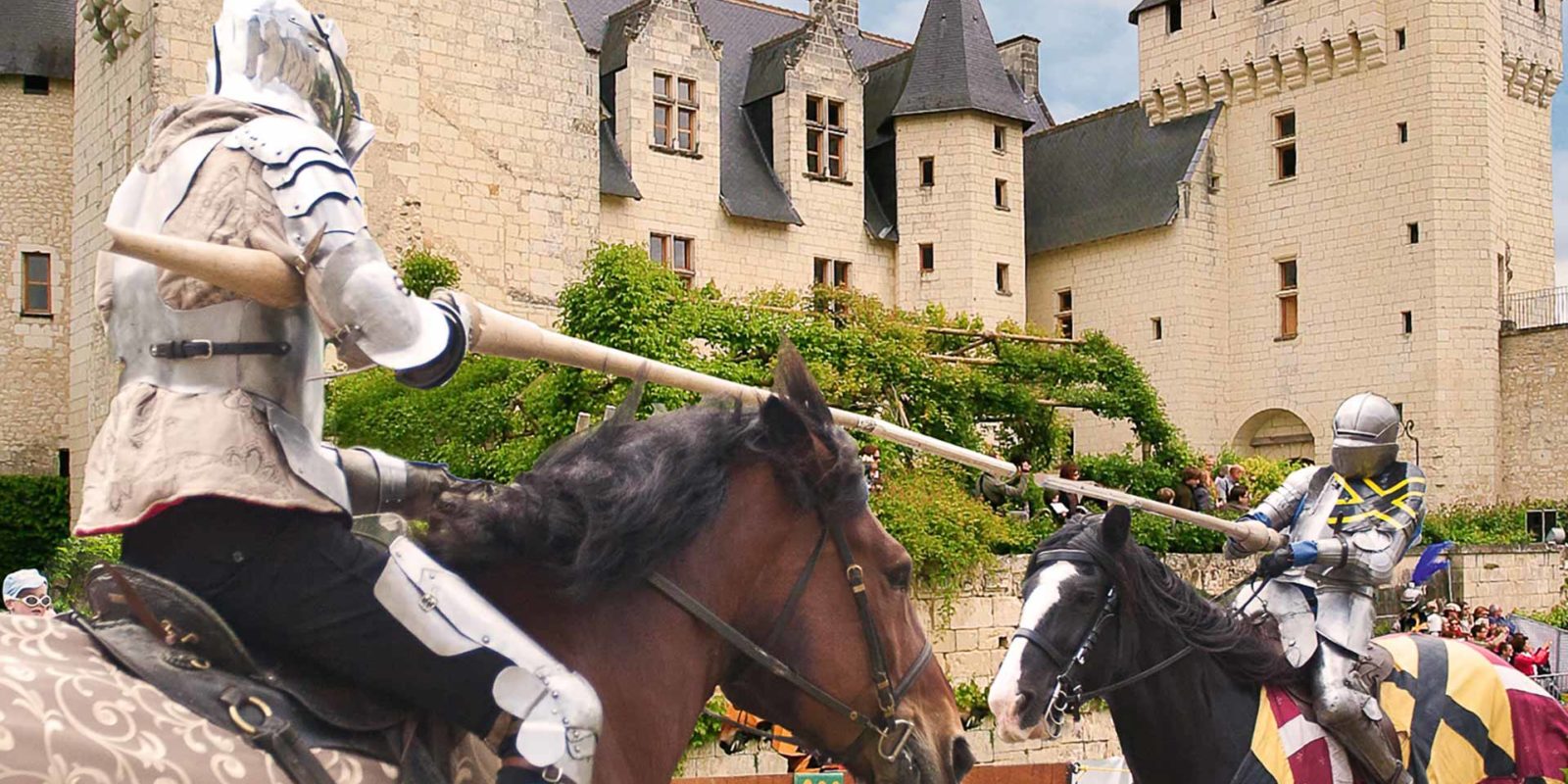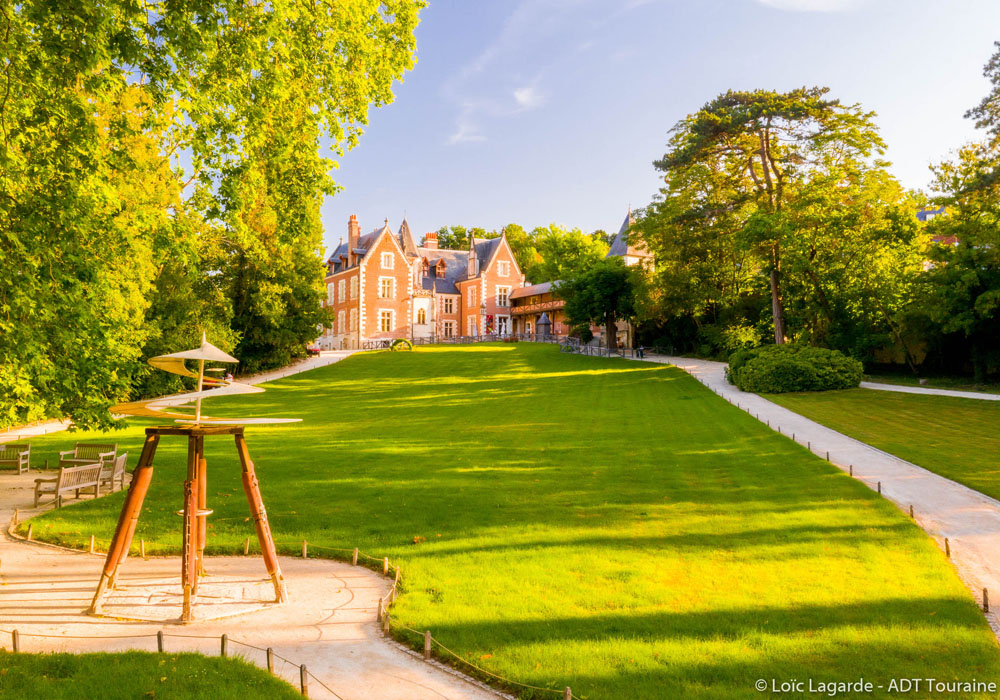The Loire Valley chateaux in Touraine
To say that the castles in Touraine are part of the landscape would be an understatement! Whether they are illustrious french chateaux or less well-known manor houses, their silhouettes are always omnipresent. Why are so many of them concentrated in this part of France, around the city of Tours?
Those heritage sites are the legacy of the French kings who adored the Loire Valley.
Alongside the medieval fortresses (Chinon, Loches) then the royal estates (the royal chateau of Amboise, right above the Loire river), a large number of castles were built by leading figures of the realm and court nobility (Azay-le-Rideau, Chenonceau, Villandry). A beautiful travel through history.
Initially built for defensive purposes in the troubled times of the Middle Ages (Langeais, Le Rivau, Ussé), the Loire Valley chateaux gradually opened outwards during the French Renaissance (15th century), abandoning their austere ramparts and drawbridges to make way for a style particularly inspired by Italian culture. It was at this time that the tradition of gardens, considered as ‘outdoor salons’, came into being in the Loire Valley.
The myriad personalities of the Loire Valley Chateaux
Today, each one tells its own unique story, which is part of the French history: the sumptuous feasts of the royal court at the royal chateau of Amboise, the legendary meeting between Joan of Arc and the French Dauphin in the town of Chinon, the multi-talented genius Leonardo da Vinci at the chateau of Clos Lucé, the epic marriage of a Windsor at the Domaine de Candé, the work of the great gardener Dom Pacello at the Royal estate of Château Gaillard, Rodin and Camille Claudel’s love affair at the chateau de l’Islette… You’ll be spoilt for choice!
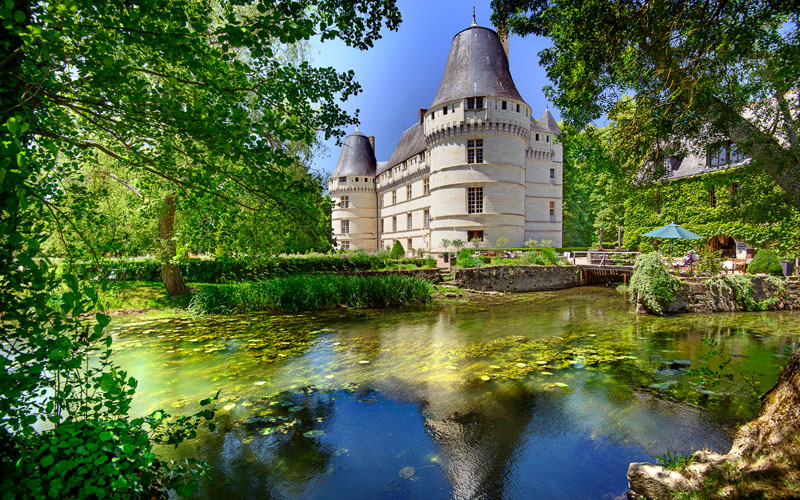
Chateau of l’Islette – Loire Valley, France.
The Loire Valley Chateaux, heritage in motion
The revival is here to stay and Touraine’s heritage has its sights set firmly on the future. Almost everywhere, there are initiatives helping to improve the ways of discovering the Loire Valley castles and the visitor trails. Cycling Loire Valley also provides an opportunity to combine an active holiday in the French countryside with discovering this Unesco World Heritage Site, with essential steps like Chambord, Blois, Chaumont, Amboise, the town of Tours and its old cathedral, Villandry gardens, Langeais, Azay-le-Rideau, Ussé, the town of Chinon and its wines…

Royal Chateau of Amboise – Loire Valley, France.
Even if summer is the ideal season for beautiful night shows or a wine tasting organized by winemakers in a castle courtyard, winter time has got surprises in store. For a few years’ time, the Touraine region has become the place to be in December thanks for “Christmas in the land of chateaux”. It is the occasion for 7 of our most famous castles to dedicate their monument to the magic of Christmas and celebrate the end of the year !
Map of the Loire Valley Chateaux
Which Loire Valley castles to visit absolutely?
Here is some key information (history of France, remarkable elements…) to help you make your choice of self-guided or guided tours on the way to the most beautiful castles, parks and gardens of the Loire Valley. Most of these buildings have been modified over time. Some have elements of both medieval and Renaissance architecture, or even from other styles. For ease of understanding, however, we have classified them into two broad categories.
Medieval monuments
Royal fortress of Chinon. Henri II Plantagenêt, Jacques de Molay (the Knights Templar), Charles VII and Joan of Arc succeeded one another in this superb medieval fortress on the banks of the river Vienne.
Fortress of Montbazon. Under its impressive keep, many activities take visitors into the medieval world. On this beautiful stage of the Cyclo Bohème, you learn history while having fun!
Château du Rivau. Its silhouette leaves no room for doubt: it comes straight from the Middle Ages (Joan of Arc came here to get her battle horses to undertake the siege of Orleans), or even from a book of fairy tales. So much so, in fact, that its owners have taken great pleasure in imagining superb themed gardens with evocative names: “the garden of Little Thumb”, “Alice’s labyrinth” or “the garden of Princess Rapunzel”. A beautiful stage on the Richelieu-Chinon green path!
Royal city of Loches. To visit: the keep erected by the Count of Anjou Foulques Nerra, and the royal dwelling (Renaissance architecture) which saw Agnès Sorel, Joan of Arc and Anne of Brittany pass by.
Castle of Langeais. A fortified castle facade (drawbridge, towers, machicolations…), but on the garden side, a residence marked by the Renaissance style! The marriage between Charles VIII and Anne of Brittany sealed the attachment of Brittany to the kingdom of France.

The chateau of Langeais, near the River Loire.
The Renaissance monuments
Château Gaillard. Louis XII gave it to Dom Pacello, a famous Renaissance landscape painter, who grew the first orange trees in France. Magnificent gardens are revealed along the “Seven Paradise Paths”. You can finish your visit with a tasty – orange-flavoured – cake!
Royal Castle of Amboise. Francis I was responsible for the construction of the Château de Chambord, and spent part of his childhood at Amboise, before succeeding Charles VIII. The Saint-Hubert Chapel holds the tomb of Leonardo da Vinci, and a garden honours the memory of Emir Abd al Qadir, a prisoner at Amboise for four years after the capture of his “smala” (encampment), in which Henri d’Orléans played a significant part.
Château du Clos Lucé. Welcome to the final dwelling place of Leonardo da Vinci. You will find many models of his inventions in the chateau and in the grounds, and two galleries dedicated to his work. He was interested in engineering, but also in art, science, botany, town planning – Leonardo da Vinci certainly brought his genius to bear on many different subjects!
Château de Chenonceau: The famous Chateau of the Ladies is remarkable for its arches that elegantly span the River Cher, and was marked by the rivalry between Diane de Poitiers and Catherine de Médici. On the death of Henry II, Catherine de’ Medici reclaimed the Château de Chenonceau and offered Diane the Estate of Chaumont-sur-Loire, near Blois.
Castle of Azay-le-Rideau. Visit a masterpiece of the early French Renaissance, see its image in a reflecting pool fed by the River Indre. Built by Gilles Berthelot, Treasurer of France, the chateau was later seized by Francis I, then offered to Antoine Raffin, Captain of his Bodyguards! The English-style park is especially fine, with its majestic trees (Sequoias, Cedars, Virginia Tulip Tree, and many others).
Castle of Villandry. The Château de Villandry, briefly the property of Jérôme Bonaparte, is particularly known for its splendid gardens, especially its “sun garden” and its Renaissance kitchen garden. Like the Royal Château d’Amboise, the estate is a Ligue pour la Protection des Oiseaux (French League for the Protection of Birds) sanctuary. Visitors can fully appreciate the French art of living as they walk along the pathways, as well as inside the building, with the furniture, the decor and the atmosphere.
Castle of Ussé. Built on the banks of the River Indre, this chateau inspired Charles Perrault to write Sleeping Beauty. The visit includes some scenes from the story. The main aspect of this monument that strikes the visitor is its great elegance, as in the gardens laid out by André Le Nôtre, Louis XIV’s famous gardener, who was also responsible for the gardens at Versailles, Vaux le Vicomte and Chantilly.
Castle of Montrésor. Xavier Branicki, the very rich exiled Polish count and friend of Jérôme Bonaparte, made his mark on this historical monument. It holds a large collection of objects telling the visitor many stories. An Ali Baba’s cave in a very beautiful setting, at the heart of one of the most beautiful villages in France.
Castle of Islette. This was the favourite rendezvous for Camille Claudel and Auguste Rodin, who came here to this calm place to pursue their perfect love, rocked by the currents of the River Indre. There are rowing boats available for hire, offering the pleasure of boating within the park – so very beautiful and romantic.
Montpoupon Castle. Here you can find out about chateau life at the beginning of the 20th century as you follow Louise, the chambermaid. You may think that it is not haunted, but it feels as though the former inhabitants could reappear at any moment. You can finish off your visit with a pleasant forest walk, and there is also a museum devoted to hunting with hounds.
Château de Gizeux. The De Laffon family have patiently restored and cared for Gizeux, and a very pleasant visit awaits you. Don’t miss the spectacular Gallery of Chateaux. There are numerous activities available for families, starting with a treasure hunt.
Champchevrier castle. This chateau was particularly well furnished, but Louis XIII still slept on straw here! This elegant chateau stands in the middle of a great forest, where numerous wolves lived in the 19th century. That is why they started hunting with hounds. During your visit, you can see the pack of hounds – English Fox Hounds crossed with French Poitevins.
Castle of Candé. Jacques Drake del Castillo, son of a rich family of sugarcane planters in Cuba, inherited this chateau. He was notably involved in reconstructing the vineyards of Touraine, after the infestation of phylloxera and attacks of mildew. In 1930, a Franco-American businessman, Charles Bedaux, acquired the estate. He provided the chateau with the most up-to-date fittings at the time, which meant that he was able to hold the marriage of the Duke of Windsor and Wallis Simpson here. As with the fortress of Chinon, this Loire chateau plunges us into the history of England!
Royal chateau of Amboise – Picnic in the park
Loire castles to visit elsewhere in the Loire Valley
The great collection of Loire Valley castles is not limited to Indre-et-Loire. Many others are also to be visited in the neighbouring departments:
- In the Loiret: Sully-sur-Loire castle;
- In the Loir-et-Cher: castle of Chambord, domain of Chaumont-sur-Loire, royal castle of Blois, castle of Cheverny …
- In the Indre: Valençay castle ;
- In Maine-et-Loire (Anjou) : Saumur castle, Brézé castle, Brissac castle, Angers castle;
- In the Loire-Atlantique region: Nantes castle.

